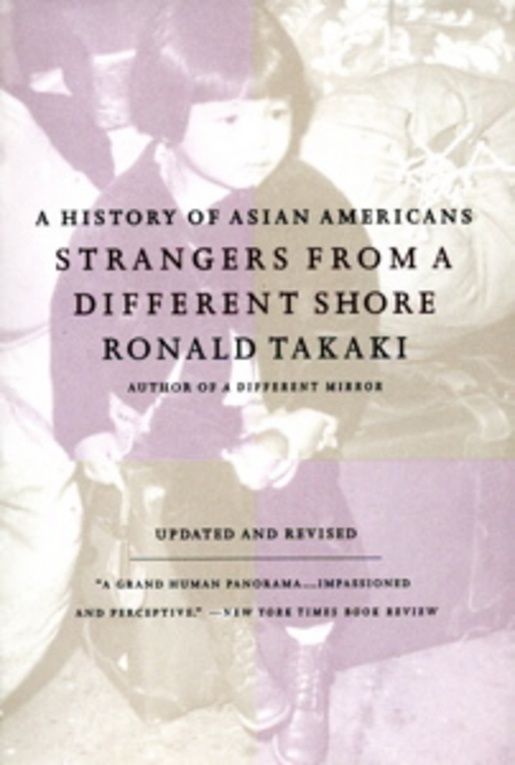Published: April 29, 2007
Modified: Feb. 11, 2025
'Strangers from a Different Shore: A History of Asian Americans' was written by Ronald Takaki. I read this work my freshman year at Occidental College for the course Mutual Images of East and West. It is a detailed historical account of the continual waves of Asian immigrants to America, beginning in the 19th century with the influx of Chinese immigrants hoping for financial success in the gold rush.
Lured by tales of the 'gold mountain', Chinese immigrants came to California and found economic exploitation, forced isolation, racism, and violence. Most were forced into back-breaking labor in mines, railroad construction, and laundries due to discrimination.
Takaki's account continues on to the experiences of Japanese-Americans as migrant workers in the orchards and plantations of California and Hawaii. As a Japanese-American himself, Takaki has a unique perspective; he was raised in Hawaii, a descendent of cane plantation workers. He details the social and economic factors that led to the construction and growth of Little Tokyo in Los Angeles. As well, he addresses the internment of Japanese-Americans at the outset of World War II.
Most Americans are familiar with the history of European immigrants that entered America through Ellis Island, off the East coast. The title's "different shore" refers to the West Coast immigration station at Angel Island, off the coast of California, that most Asian-Americans passed through. In fact, many were detained there without notification of a date of release. Some, in fact, were deported back to their countries of origin for reasons they could not contest. Takaki includes haiku and poetry that Japanese immigrants carved into the walls of their barracks on the island, expressing disillusionment, loneliness, frustration, and hope.
The book then traces the history of Filipinos and East Indians in their American experiences, and as the timeline progresses, Takaki details the 'second wave' of Vietnamese, Laotian, Cambodian, and Hmong workers that started in the 1960s. The trajectory of all of these immigrant groups reveal the experience of economic exploitation, distrust, and mistreatment.
Takaki's work is very well organized, factually succinct, and highly readable. His inclusion of interviews with Asian-Americans allows the reader personalized perspectives into historical time. Anyone who is interested in the history of Japanese-Americans and other Asian American groups will find this work enriching.
This work is licensed under a Public Domain










